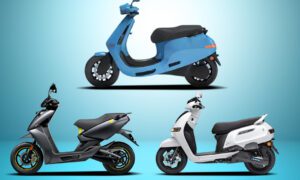A software-defined vehicle concept has taken the automotive industry by storm. Vehicle manufacturers, OEMs, new mobility providers – all members of the automotive ecosystem that fight to stay relevant focus on ongoing transformation to build more software-oriented organizations. With huge efforts and investments come opportunities to build services meeting customer expectations, enhance upselling, explore new business models, and unlock additional revenue streams.
Why software-defined vehicles
According to automotive software industry experts, such as Grape Up company, the software-defined vehicle term was coined to emphasize the essential meaning of software for future vehicles. Everyone remembers the dedication to performance and design ensured by the hardware-defined predecessor of SDV. And while vehicle manufacturers still have to deliver core functional capabilities, competitive advantage is built on computing power, software development quality, continuously upgraded vehicle infotainment systems, and connected services.
Is there a chance for a software-defined, gradual transformation? The answer is no as premium vehicles today are supposed to provide convenience features, consumers expect richer content and infotainment improvements, and demand for driver assistance features grow. As a software-defined vehicle is reshaping customer expectations, soon we can observe similar demand for mass-market vehicles.
Automotive software development and monetization in the automotive industry
Software-defined vehicles provide promises. For customers, more automated driving (or even fully autonomous driving), new features and software upgrades easy to receive over-the-air (remote updates), improved safety, joining a connected ecosystem of other vehicles and devices, and other advantages compared to traditional solutions. For driving manufacturers and mobility providers, the opportunity to monetize vehicle data, build connected relationships with customers, and new business models.
Building new revenue streams
According to the reports focused on vehicle dynamics, all trends are against vehicle manufacturers – new generations don’t want to own vehicles, they just want to use them on-demand. When car sales is not going to increase, the software-defined vehicle trend has become an opportunity.
Over-the-air upgrades and easy access to e-commerce enable end-users to buy and receive remotely additional apps, vehicle functions, and a broad range of virtual content and infotainment. Also, parking spots can be paid directly from fully integrated car software systems which allows to create long-term offerings.
Among additional services that can upgrade the software-defined vehicle, customers can choose theft monitoring solutions, vehicle usage monitoring (especially profitable for fleet management, giving vehicle manufacturers insight), navigation services (leveraging connectivity capabilities and communication with the entire infrastructure), or predictive maintenance (suggestions to repair modular software components or mechanical features in advance.)
As every vehicle becomes a software-centric electronic device, monetization goes beyond vehicle features. Drivers are now members of an audience for automotive-related content, and also other products advertising. It’s believed that soon there will be easy to do shopping directly from the driver’s seat.
Data collected by software-defined vehicles are valuable not only for the seamless development of software in vehicle domains and effective life cycle management. 3rd party partners, such as insurance enterprises can offer drivers user-based, tailored products and services using insights covering driving behavior.
Reducing various costs
While investing huge amounts of money in building software development teams, adopting new technologies, and rebuilding company culture, automotive enterprises can use data gathered by a software-defined vehicle to improve life cycle management, operations, processes, and even R&D projects.
All these data allow to improve resource management, better analyze vehicle usage, and carefully monitor software architecture. Machine learning and Big Data solutions provide automotive teams with actionable insights and enable them to make data-driven decisions, both when designing a car and when maintaining it. Backed with data, innovative vehicle manufacturers differentiated from legacy companies.
By monitoring driving behavior, a software-defined vehicle can provide its users with driving style suggestions that also lead to better maintenance and cost reduction. With data-driven decision making many projects can be easier verified, which allows to better manage R&D budgets.
Improved safety and cost-reducing security strategies
Software-defined vehicles, equipped with multiple sensors and driving monitoring systems can warn a driver about fatigue sympthomps, bed conditions on the road, and places to be especially focused on driving. It’s also for a driver to provide real-time information about local laws and help adjust to the rules. Once something wrong happen, being connected to the network, allows drivers precisely ask for assistance or even order rental vehicle.
Connectivity and a software-defined vehicle at the center of the connected ecosystem allows govermnets better manage infrastructure, solve traffic issues, cover security patches, design more effective solutions for the future, or even driver-friendly repair planning based on less less traffic periods.
Software development partnerships
Every automotive enterprise willing to produce software-defined vehicles need to build essential expertise. It’s a demanding and long-term process. Accelerating the transition toward software-centric organization, leaders of the automotive industry work with software development and consulting companies like Grape Up.
Grape Up helps these enterprise build cloud infrastructure, enable software platforms, understand software complexity, and deliver production-ready software solutions that use AI, Big Data, and machine learning to improve driving experience.













































